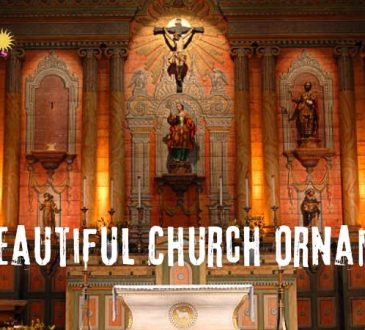The Majestic Beautiful Church Spires: A Timeless Architectural Marvel
Church spires have graced the skylines of cities and towns around the world for centuries. These towering structures, often adorned with intricate details and symbolic elements, have captured the hearts and imaginations of people from all walks of life. In this exploration of Beautiful Church Spires, we will delve into their historical significance, architectural features, and the enduring beauty that makes them stand as symbols of faith and architectural excellence.
Contents
The Majestic Beautiful Church Spires
Section 1: A Symbol of Faith and Spirituality

The history of church spires is deeply intertwined with the history of religion itself. Throughout time, they have been more than mere architectural elements; they represent faith, hope, and aspiration. Here are some key aspects of church spires as symbols of faith:
A. Pointing Heavenward: Church spires often reach for the heavens, symbolizing the connection between Earth and the divine. They serve as a visual reminder of the spiritual aspirations of the community they serve.
B. Beacons of Hope: In many cultures, church spires have served as beacons of hope and a source of solace during difficult times. Their presence in a town or village can offer comfort and a sense of continuity in the face of adversity.
C. Architectural Worship: Church spires are, in themselves, a form of architectural worship. They showcase the skill and devotion of builders and artisans who crafted these structures with meticulous care.
Section 2: Architectural Marvels
Church spires are not only symbols of faith but also architectural marvels that showcase the talents of designers and builders. They come in a wide variety of styles, each with its unique features and characteristics. Here are some notable architectural styles of church spires:
A. Gothic Spires: Gothic architecture, with its pointed arches and ribbed vaults, gave rise to some of the most iconic church spires in Europe. Cathedrals like Notre-Dame in Paris and the Cologne Cathedral in Germany boast towering Gothic spires that mesmerize with their intricate stonework and soaring height.
B. Baroque Spires: The Baroque period introduced a more ornate and decorative style to church spires. These spires often feature elaborate sculptures, domes, and decorative elements. The St. Peter’s Basilica in Vatican City showcases a magnificent Baroque dome and spire.
C. Renaissance Spires: Renaissance-inspired church spires are characterized by their classical proportions and symmetry. The Florence Cathedral, with its iconic dome and spire designed by Filippo Brunelleschi, exemplifies Renaissance architecture at its finest.
D. Modern Spires: In more recent times, church spires have taken on a modern twist. Architects have experimented with materials, shapes, and designs to create contemporary spires that blend tradition with innovation. The Crystal Cathedral in California, designed by Philip Johnson, is a prime example of a modern church spire.
Section 3: Symbolism and Iconography

Church spires are often adorned with symbolic elements and iconography that convey deeper spiritual meanings. These symbols can vary widely depending on the religious denomination and cultural context. Some common elements include:
A. Crosses: Crosses are perhaps the most universal symbol found on church spires. They represent the crucifixion and resurrection of Jesus Christ, central to Christian faith.
B. Angels: Angelic figures or statues are often perched on spires, symbolizing divine messengers and protectors of the faithful.
C. Bells: Bells housed in spires are used to call the faithful to worship, mark significant moments in the church calendar, and serve as a symbol of community.
D. Stars: Stars can be found on spires, representing the Star of Bethlehem, which guided the Wise Men to the birthplace of Jesus.
E. Gargoyles and Grotesques: In Gothic architecture, these grotesque figures were often placed on spires to ward off evil spirits and serve as water spouts.
Section 4: Preservation and Restoration
Preserving and restoring church spires is a crucial endeavor to ensure their continued beauty and historical significance. Many spires, especially older ones, have faced the ravages of time, weather, and neglect. Organizations and communities around the world are working tirelessly to protect these architectural treasures.
A. Conservation Efforts: Skilled craftsmen and conservationists work together to repair damaged stonework, replace deteriorated sculptures, and stabilize the structural integrity of church spires.
B. Historical Research: Extensive historical research is often conducted to ensure that restoration efforts remain faithful to the original design and intent of the spire.
C. Community Involvement: Community fundraising and awareness campaigns play a significant role in funding restoration projects. These efforts bring communities together to protect their heritage.
Section 5: Church Spires in Popular Culture

Church spires have left an indelible mark on popular culture and have been featured in literature, art, and film. Their presence often adds depth and symbolism to various works of art and storytelling.
A. Literature: Church spires have been a prominent backdrop in many literary works, symbolizing various themes, from faith and redemption to mystery and intrigue.
B. Art: Renowned artists like Vincent van Gogh and Claude Monet painted church spires in their works, capturing the interplay of light and architecture.
C. Film: Church spires have been featured in countless films, contributing to the ambiance and setting of various scenes. Notable examples include the spires of Notre-Dame in Disney’s “The Hunchback of Notre-Dame” and the enchanting spires of Minas Tirith in “The Lord of the Rings.”
Conclusion
In conclusion, church spires are not merely architectural features; they are symbols of faith, hope, and human ingenuity. These towering structures have graced the world’s skylines for centuries, inspiring awe and reverence. From their historical significance and diverse architectural styles to their enduring symbolism and role in popular culture, church spires continue to captivate our hearts and minds. Their beauty remains a testament to the power of human creativity and the enduring presence of faith in our lives.



